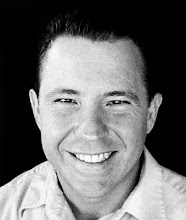
By Antonio E. Amador (©2011).
Just before photography, a painter's basic was to be able to recreate reality, be able to paint a realistic human face, body, landscape, buildings and any other subject out there. A good painter could do so with impact, with beauty, with drama, or with marked personal style; but the basic skill was to master the realism.
So what happened when photography came around in the 19th century? For once, painting turned to anything else but realist; welcome the birth of modern art. Impressionism, Cubism, Surrealism, Abstract Expressionism are just some of the most notorious movements or styles that developed in the visual arts. Unable to compete with the realism of photography, painting turned into an expression of all sorts of fancy and personal interpretations; it became subjective.
As photography matured, past the technical proficiency á la Ansel Adams, and all technical proficiency required to do a good documentary, objective image (let's call that the "craft and science of photography"), the photographer that intends to do art, must not let his art be dictated by the subject, but by his own way of portraying that subject. In other words, art is never about the portrayed object, but about the artist.
So how do we do this? I believe one good way to do this is to simply stray away from photography's nature of capturing the real world, and use the camera to capture an emotion, portray an idea, communicate our-self. Get in close, go for a detail; find a pattern, of forms, or colors; go for interesting lighting; interesting light-shadow play-contrast; a texture; use an unusual perspective; use post-production and alter the reality; change the hue, control the color palette, control the softness, sharpness or focus points. I outline some of these tips in more detail below.
Of course, before we can say we are making art, we have to find our own voice, identify our themes and develop a style accordingly. What you enjoy photographing right now points to the above questions, and the kind of photographs you like the most point to your style. Now it's a matter a making a conscious choice, and start narrowing down your options and concentrate on what represents you the most. It is the sign of artistic maturity and it help people pinpoint you as an artist.
1. Unusual Point of View.
Move behind, to the side, see it against different backgrounds. Make it not so obvious to the viewer. Remember, it is not anymore about identifying a subject, but about what interesting forms, shapes, colors we can come about in a way that would elicit a response, or an emotion.
2. Get REALLY Close; Show the Unseen.
Flowers and other natural objects offer a wonderful new world when you move in close enough. Focus on that that the naked eye usually don't see. A true macro lens helps tremendously here. Find forms, shapes, interesting compositions in the little world of close up photography.
3. Creative Focusing, Depth of Field and Bokeh.
Don't be afraid to explore the extremes of focusing; a totally blurred world can be beautifully cut by a sharp subject in the scene. Again, a macro lens can help lots; as well as long telephoto with fast aperture or other lens with a wide aperture. See for interesting out of focus lines or shapes in the background; it can create some of the most breathtaking images. Bokeh photography (that is, photography where bokeh is an integral part of the image) can reward with beautiful and inspiring photography.
4. Creative Direct Lighting for interesting Tone Differentiation.
Go for the moment, or the extreme, or the contrast relationships. Lighting can create the drama you may be looking for; can create bold contrast or simply soft expression. Morning and evening low and warm light con provide good opportunities to exploring direct lighting; or in the lack of, you use artificial devices, like a flash, or a flashlight (preferably LED, for a cooler light closer to outdoor light).
5. Control the Color Palette.
As our work matures, we will want to control more and more of the elements in the frame and start removing more and more unwanted elements. Colors are very powerful, thus they should be used wisely and carefully. First, do not include too many colors in a scene; a good photograph has usually one dominant color and possibly up to two supporting ones.
6. Work Hard on Finding the Perfect Shot.
The art in photography may just be in how selective and consistent you are in what you decide to photograph. Many times, nature and the world do present us with great forms, colors, textures, lighting, that couldn't get any better if imagined by an artist. Part of our art is to simply recognize such opportunities (that is, have sharp artistic sensibilities) and execute in a way that portrays our vision and style. When we do this consistently, we are indeed creating art.
7. Post-Processing (Digital) Treatment.
This is where it actually gets fun. Change color, over-blow highlights, alter clarity, turn to black and white, you name it. With today's digital capabilities, a picture does not end anymore when the shutter is released, but that's only half of the story. When getting artistic, the computer has given us a world of possibilities to develop our artistic style and put our vision in concrete.
Happy Shooting!!
